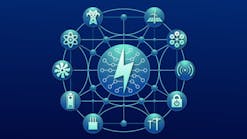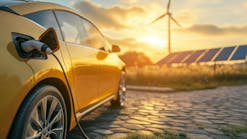Partnerships Hold Great Potential for Electric Utilities, EV Manufacturers
The recent announcement by a group of electric vehicle (EV) manufacturers and utility companies to form the Zero Emission Transportation Association (ZETA) marks an important step in a relationship that has the potential to accelerate the achievement of strategic objectives in both sectors. The ultimate winners to emerge from this symbiotic relationship, however, may turn out to be consumers who are looking for opportunities to contribute to a greener planet, but are wary of how to do so in a way that makes economic sense.
As the automotive sector explores its long-term options for bringing EVs to consumers, two of the major issues they face revolve around establishing an infrastructure which:
- Mitigates range anxiety that has depressed interest — and demand — for EVs; while
- Maximizing convenience for consumers looking for an easy and intuitive way to recharge their vehicles at home and on the go.
While Tesla, the industry leader in EV sales, has been proactive about establishing infrastructure, the company’s approach has been largely proprietary. EV models from other brands cannot take advantage of Tesla's charging platform. Given the head start that Tesla has established — not only in EV technology but also in infrastructure buildout — the rest of the EV industry is actively exploring the development of a recharging infrastructure strategy built on open systems and standards that can be shared by various brands and across broad swaths of geographies.
This is where forward-thinking utilities come in. A national recharging infrastructure based on a coordinated effort from the complex community of local and regional electric utility providers could provide the scale and capacity to underpin the growth of the EV market in a financially rational manner. Utilities can support the rollout of both public and residential infrastructure that will enable more rapid acceptance — and therefore growth — of the EV market. It would also fundamentally alter the relationship that the utility industry has with consumers and the overall economy. This shift offers the potential to provide a critical new revenue stream — and justification point — for funding next-generation plants and energy grids necessary to support the growth of utility clean energy goals and carbon-reduction/elimination initiatives.
New Opportunities for Expanded Customer Relationships
Moreover, EVs offer the opportunity for utilities to develop a whole new category of constituent — mobile, on-the-road customers — while enhancing their relevance to residential and business customers. This is an important development.
Today, most revenues generated by utilities are the result of regulated rates, based on usage and periodic demand on the grid, which are established by public utility commissions and other state and local authorities. As the EV market grows to eventually achieve a critical mass of adoption, utilities could develop a much richer and more diverse set of relationships with consumers.
Utilities will not only be responsible for bringing electricity to homes but also for powering their daily commute and, eventually, longer-haul business and leisure trips. The growth of the EV market will translate into greater demand on the grid, which elevates the importance and urgency for justifying new investments in sustainable energy resources.
As it stands today, the most recent J.D. Power Electric Utility Residential Satisfaction Study finds that EV owners hold their utility providers in higher regard (overall by 47 points on a 1000-point scale) than their internal combustion engine-owning counterparts. Looking at specific drivers of satisfaction, EV households rate the "corporate citizenship" of utilities 83 index points higher than non-EV owners. Even satisfaction with price factors improves among EV owners compared with non-EV owners by 78 index points.
EVs Expand Presence of Utilities Beyond Premises
Outside of the homes and businesses served by utilities, leaders in the industry have an opportunity to extend their service territory to customers beyond their traditional footprint. As traffic from outside the region moves through service areas in need of a recharge, utilities will not only capture net new incremental revenue but also may expand awareness — and goodwill — associated with their brands.
As the dynamics of this trend gathers momentum, a growing number of utilities around the country are activating different messaging and offering strategies based on their specific circumstances. For instance:
- Cobb EMC is offering a NiteFlex service that allows customers to recharge EVs at home, overnight, for free, lowering the costs of operating EVs to pennies per mile.
- ConEdison is offering rewards for off-peak charging along with incentives for the installation of fast charger devices.
- Duke Energy is electrifying its own fleet and building out charging infrastructure at workplace locations for employees.
- Xcel Energy has announced commitments to help get 1.5 million EVs on the road in its service territories by 2030.
The national conversation about the effect of a maturing EV market on the energy infrastructure is still in its early stages. What this will look like is not clear. What is clear is utilities that are left out of the dialogue risk being left out of an immense opportunity. To avoid being left in the dark, J.D. Power recommends that leaders in the sector consider these steps:
- Establish key partnerships: Utilities will not achieve their target outcomes without assistance (for example, automakers, infrastructure providers, charger manufacturers). Utilities should develop business models that will enable all parties to contribute and benefit from a large-scale EV ecosystem.
- Educate consumers on value: Utilities are positioned to elevate EV awareness by providing vital cost of ownership information (for example, rates, incentives, fuel/maintenance savings) that inform and promote the benefits of moving away from internal combustion engines to EVs.
- Develop residential EV programs and services: Beyond the incentives of discounted EV rate offerings, utilities can establish greater trust with consumers by supporting in-home vehicular needs, such as rapid charging installations.
- Fleet electrification: Put down a marker to show the commitment to general transportation that is electrified. Convert the utility fleet to EVs in the communities they serve.
Electric utilities have an opportunity to be a catalyst for initiating and supporting the collaborations that will help put more EVs on the roads and build needed infrastructure while showing environmental leadership. By committing to — and communicating — a comprehensive EV vision and strategy today, utilities stand to significantly change their customer value proposition for the better.
Originally published as an insights brief based on J.D. Power research.




